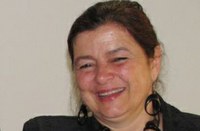 The challenge was straightforward. The solution seemed simple. But the unintended consequences of the response created problems of its own that were subsequently addressed through an innovative approach to mother-infant care – an approach that has since been adopted by growing number of countries.
The challenge was straightforward. The solution seemed simple. But the unintended consequences of the response created problems of its own that were subsequently addressed through an innovative approach to mother-infant care – an approach that has since been adopted by growing number of countries.
In the 1970s, hospitals in Bogota, Colombia, did not have enough incubators to treat premature (less than 37 weeks of gestation) and low-birth weight (less than 2,500 grammes) infants who require special medical care during the first days and weeks of their lives.
To overcome this problem, two babies instead of one were placed in each incubator. The ability to treat breathing and nutritional challenges improved, but the number of infections rose significantly.
"An alternative method of care had to be found", says Nathalie Charpak, director of the Kangaroo Foundation in Bogota, Colombia, speaking at the 44th session of the Erice International Seminars on Planetary Emergencies in Erice, Italy.
Charpak did find an alternative method of care in which children are carried in skin-to-skin contact on the mother's chest for warmth and security. Colombian pediatrician, Edgar Rey Sanabria, first devised this method in 1978.
The method is called Kangaroo Mother Care. As Charpak explains, "new-born kangaroos are not sufficiently developed to survive on their own. They are nurtured in their mother's pouch until they are strong enough to do so."
"When we applied this 'pouched skin-to-skin' care to premature and low-birth-weight infants," she says, "it helped the infants overcome the medical risks that they faced." In effect, the mother became an incubator.
Kangaroo Mother Care has been adopted by hospitals in countries ranging from Malawi to Sweden. Today, hospitals in more than 30 countries train mothers on how to care for at-risk newborns in this way. It is a technique that is particularly important to developing countries, where an estimated 90% of all premature and low-birth-weight infants are born.
Charpak says that numerous studies – 10, 000 articles on the subject are listed in MedLine alone – have shown that Kangaroo Mother Care has multiple benefits. It not only reduces infant mortality and morbidity, but also aids in breast feeding, promotes mother-child bonding and increases the confidence of mothers in caring for their babies. The World Health Organization (WHO) endorsed the technique in 2003, and the US Agency for International Development (USAID) and Save the Children have provided funding to advance its use across the globe.
Nevertheless, Charpak believes that the spread of the technique has been too slow and that millions of additional premature and low-weight infants could benefit from its adoption.
"What we need to do now," Charpak says, "is to scale up the practice so that it reaches all children at risk."
Charpak sees two major challenges that stand in the way of progress. First, there is a need for additional funds to introduce Kangaroo Mother Care in countries, most notably developing countries, where it is not now available. And, second, it is important to implement a 'hub-and-spoke' strategy in those countries where it is in place.
"Too often", Charpak explains, "Kangaroo Mother Care training is available only in major hospitals in a country's largest cities. In the Philippines, they have devised a strategy in which a major hospital serves as a centre of excellence and training for other hospitals across the country. To date, there are four additional hospitals where training is provided."
Charpak is firmly convinced that the concept of Kangaroo Mother Care will continue to spread across the globe. "It has proven to be a highly effective, inexpensive way to address the challenges posed by the birth of premature and low-weight infants", she says.
"The only question is how quickly we can introduce the concept across the globe. The pace at which we do this is critical, because delays not only increase the prospects for illness and disease, but also cost lives."
The 44th Session of the Erice International Seminars on Planetary Emergencies took place in Erice, Italy, from 19 to 24 August 2011. TWAS attended the event at the invitation of Antonino Zichichi (TWAS Associate Fellow 1986), founder and chair of the seminar series.
For additional information about Kangaroo Foundation, see kangaroo.javeriana.edu.co

